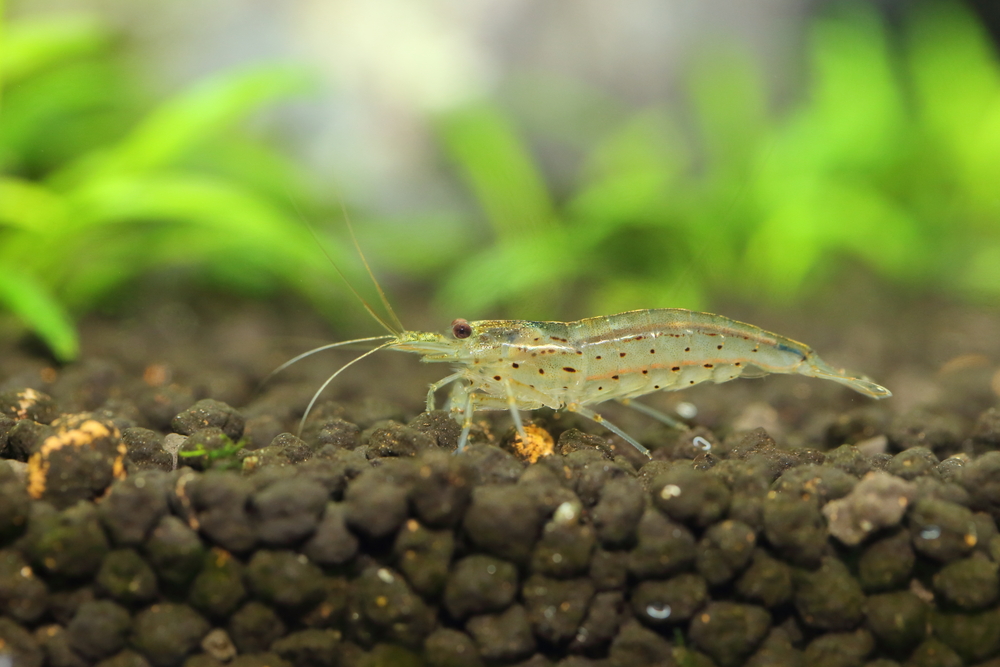Amano shrimp are a popular choice for freshwater aquarium enthusiasts due to their unique appearance and ability to consume algae.
However, many people are curious about how long do amano shrimp live in captivity. The lifespan of an Amano shrimp can vary depending on several factors, including their environment and care.
Understanding the proper care for Amano shrimp is essential for ensuring their longevity. These shrimp require a well-maintained tank with clean water and appropriate filtration.
They also need a varied diet, including algae, vegetables, and protein-rich foods. By providing proper care, Amano shrimp can live for several years in captivity.
Contents
Key Takeaways on How Long Do Amano Shrimp Live?
- Amano shrimp lifespan can vary depending on their environment and care.
- Proper care includes a well-maintained tank, varied diet, and clean water.
- With proper care, Amano shrimp can live for several years in captivity.
Amano Shrimp Lifespan

Amano shrimp (Caridina multidentata) are a popular freshwater aquarium species known for their algae-eating abilities. These shrimp are native to Japan and have been widely bred in captivity.
In the wild, Amano shrimp have a lifespan of around two years. However, in captivity, they can live up to three years or more if properly cared for.
Premature death in Amano shrimp can occur due to a variety of reasons, including poor water quality, lack of food, and stress. It is important to maintain a clean and stable environment for these shrimp to thrive.
When an Amano shrimp dies, it is important to remove the body from the tank as soon as possible to prevent any negative impact on water quality.
Overall, Amano shrimp can live a relatively long life in captivity if provided with proper care and a suitable environment.
Some key points to keep in mind regarding Amano shrimp lifespan include:
- In the wild, Amano shrimp live for around two years.
- In captivity, they can live up to three years or more with proper care.
- Poor water quality, lack of food, and stress can lead to premature death.
- Remove dead shrimp from the tank promptly to prevent negative impacts on water quality.
Understanding Amano Shrimp Care
Amano shrimp, also known as Caridina multidentata, are a popular choice for freshwater aquarium enthusiasts due to their hardy nature and unique appearance.
However, to ensure their longevity and well-being, proper care must be taken.
1. Tank Conditions

Amano shrimp require a cycled tank with a minimum size of 10 gallons. The tank should be planted with live plants to provide hiding places and a natural environment.
The water parameters should be kept stable, with a pH level of 6.5-7.5, water temperature of 70-78°F, and water hardness of 5-12 dKH.
2. Maintenance
Regular maintenance is essential to keep Amano shrimp healthy. Water changes of 10-20% should be done every week, and any uneaten food or debris should be removed promptly.
Amano shrimp are sensitive to high levels of nitrate, so it is important to monitor water parameters and keep them in check.
3. Feeding
Amano shrimp are omnivorous and will eat algae, biofilm, and leftover food. They should be fed a varied diet of algae wafers, blanched vegetables, and protein-rich foods such as brine shrimp or bloodworms.
Overfeeding should be avoided, as it can lead to poor water quality and health problems.
Feeding Amano Shrimp
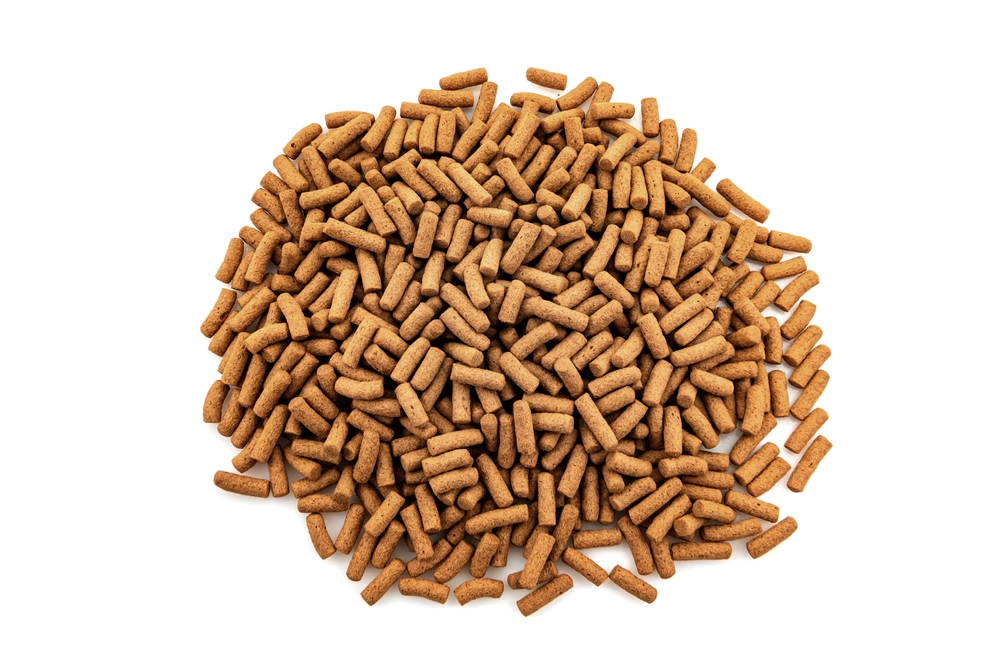
Amano shrimp are omnivores, which means they eat both plant and animal matter. In the wild, they feed on algae, detritus, and small invertebrates. In captivity, they can be fed a variety of foods to ensure they receive a balanced diet.
One of the easiest ways to feed Amano shrimp is by providing them with algae wafers or shrimp pellets. These can be found at most pet stores and are formulated specifically for shrimp.
It is important to choose a high-quality brand to ensure the shrimp are receiving the necessary nutrients. In addition to commercial foods, Amano shrimp can also be fed blanched vegetables such as zucchini, spinach, and carrots.
These should be boiled for a few minutes until they are soft and then cooled before being added to the tank. Bloodworms can also be given as a treat, but should not be the main source of food as they are high in protein.
It is important to avoid overfeeding Amano shrimp as this can lead to health problems and poor water quality. A good rule of thumb is to only feed them what they can consume in a few hours.
Uneaten food should be removed from the tank to prevent it from decomposing and polluting the water.
Amano Shrimp Habitat
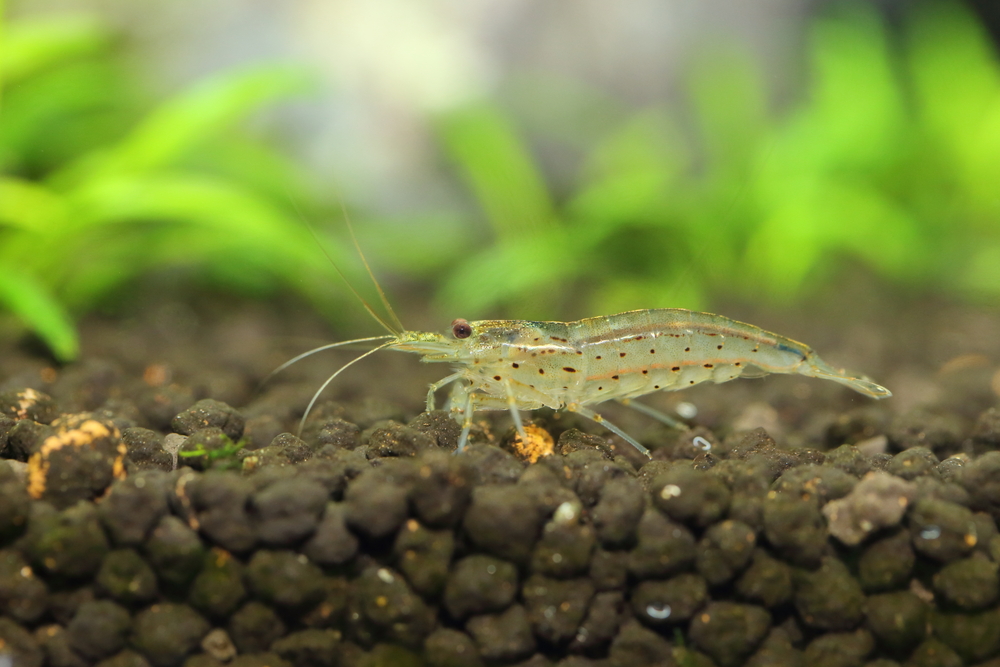
Amano shrimp are native to Japan, and they are often found in freshwater rivers and streams. They are known for their ability to tolerate a wide range of water conditions, including pH levels between 6.5 and 8.0 and temperatures between 68°F and 82°F.
In the wild, Amano shrimp prefer areas with plenty of vegetation and hiding places. They are known to hide among rocks, driftwood, and aquatic plants to avoid predators. They also require clean water with plenty of oxygen to survive.
When keeping Amano shrimp in an aquarium, it is important to provide them with a similar habitat to what they would have in the wild.
This means including plenty of hiding places, such as caves, rocks, and driftwood. Live aquarium plants can also provide excellent hiding places for Amano shrimp, as well as a source of food.
When choosing plants for an Amano shrimp aquarium, it is important to select species that are compatible with the shrimp.
Some aquarium plants may be too delicate and may not survive the constant grazing of the shrimp. Good choices for Amano shrimp aquariums include Java moss, Anubias, and Java fern.
Breeding Amano Shrimp
Breeding Amano shrimp is a complex process that requires careful attention to water quality, temperature, and feeding.
Amano shrimp are sexually dimorphic, meaning that males and females have different physical characteristics. Males are typically smaller and have a more slender body shape, while females are larger and have a rounder body shape.
To breed Amano shrimp, it is important to have both male and female shrimp in the same tank. Females can be identified by the presence of a saddle, which is a yellowish-green mass of eggs visible on the back of the shrimp.
Males will begin to chase and court females, and eventually, the female will release her eggs into the water.
After the eggs are released, the male will fertilize them, and they will hatch into tiny fry. It is important to remove the adult shrimp from the tank to prevent them from eating the fry.
The fry should be fed small amounts of food several times a day, and the water quality should be carefully monitored to ensure that the fry are healthy and growing.
Breeding Amano shrimp can be a rewarding experience for experienced aquarists. However, it is important to note that Amano shrimp have a relatively short lifespan and may not live long enough to produce multiple generations of offspring.
Amano Shrimp Health and Diseases

Amano shrimp are generally hardy and disease-resistant, but they can be affected by various health issues if their tank conditions are not optimal. Here are some common health concerns that can arise in Amano shrimp:
1. Copper Poisoning
Copper is toxic to Amano shrimp, and even small amounts can be lethal. Copper can enter the aquarium through tap water, medications, and other sources. To avoid copper poisoning, it is recommended to use a copper-free water source and avoid medications that contain copper.
2. Medication
Amano shrimp can be sensitive to medications, especially antibiotics and copper-based medications. Before using any medication, it is important to research its potential effects on shrimp and consult with a veterinarian or aquatic specialist.
3. Ammonia and Nitrite Poisoning
Ammonia and nitrite are toxic to Amano shrimp, and high levels can cause stress, illness, and death. It is important to maintain a healthy nitrogen cycle in the aquarium by cycling the tank properly, avoiding overfeeding, and performing regular water changes.
4. Filter Shock
Amano shrimp can be sensitive to sudden changes in water flow and pressure, which can occur when cleaning or replacing the filter. To avoid filter shock, it is recommended to clean or replace the filter gradually and monitor the shrimp’s behavior for signs of stress.
5. Water Quality
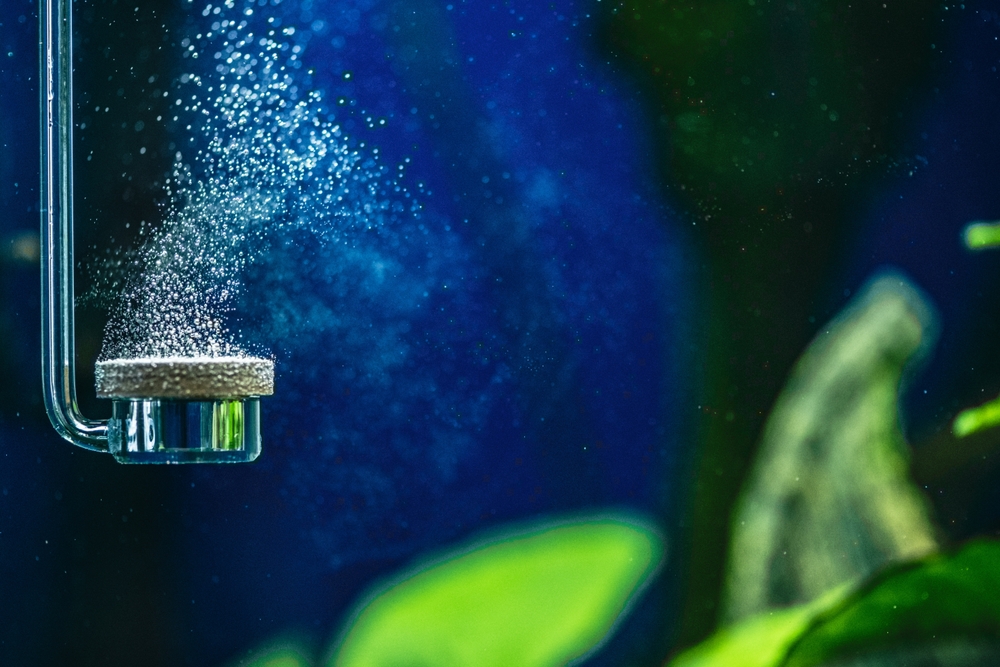
Maintaining optimal water quality is crucial for the health of Amano shrimp. High levels of ammonia, nitrite, and nitrate can be harmful, as can fluctuations in pH and temperature.
Regular water testing and maintenance can help prevent health issues and ensure a healthy environment for your shrimp.
Amano Shrimp Tank Mates
When it comes to choosing tank mates for Amano shrimp, it’s important to consider their peaceful nature. Amano shrimp are not aggressive and can easily become prey for larger fish. Therefore, it’s best to choose tank mates that are also peaceful and won’t harm the shrimp.
Some good tank mates for Amano shrimp include tetras and danios. These fish are small and peaceful, making them a great fit for a community tank with Amano shrimp. Snails are also a good option as they won’t harm the shrimp and can help keep the tank clean.
It’s important to avoid aggressive or territorial fish as tank mates for Amano shrimp. These types of fish can easily harm or even kill the shrimp.
Additionally, it’s best to avoid keeping Amano shrimp with other types of shrimp as they may become territorial and aggressive towards each other.
Amano Shrimp and Algae Control
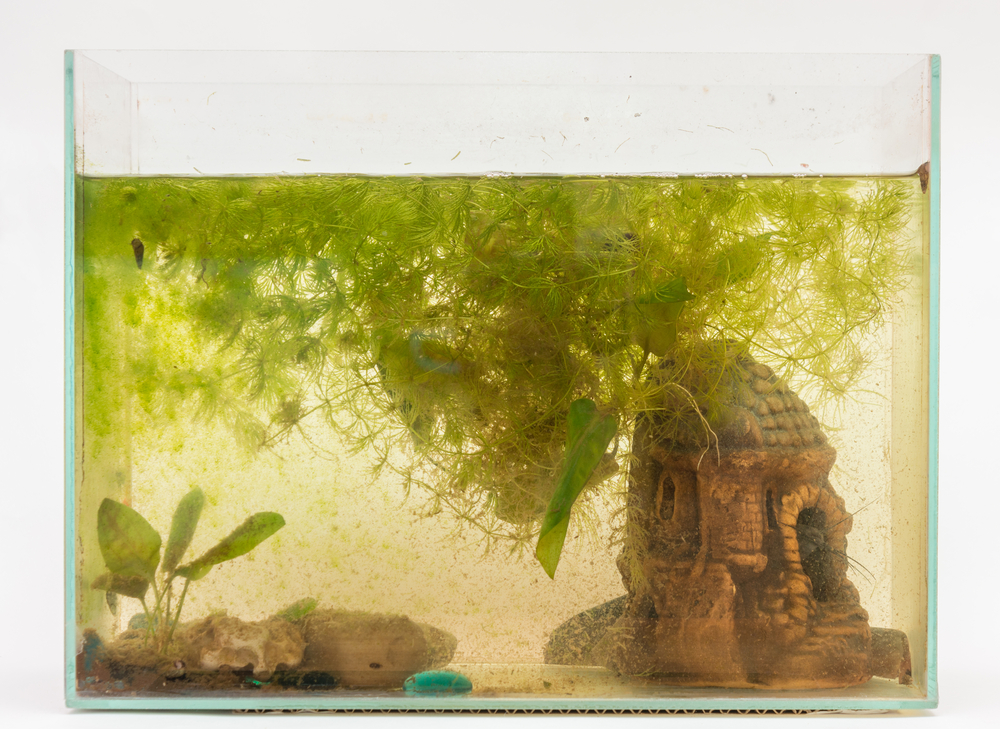
Amano shrimp are known for their algae-eating abilities and are often used in aquariums to control algae growth. These shrimp are efficient at consuming various types of algae, including green algae, hair algae, and brown algae.
Amano shrimp are a popular choice for algae control due to their peaceful nature and ability to coexist with other fish and invertebrates. They are also hardy and can tolerate a wide range of water parameters.
When it comes to feeding, Amano shrimp are not picky eaters and will consume a variety of foods, including algae wafers, blanched vegetables, and even leftover fish food. However, it is important to note that they primarily rely on algae as their main source of food.
In addition to controlling algae growth, Amano shrimp also help to keep the aquarium clean by consuming leftover food and debris. They are also known to scavenge for uneaten food, which can help to reduce the amount of waste in the aquarium.
Identifying Amano Shrimp
Amano shrimp, also known as Yamato shrimp, are a popular species of freshwater shrimp that are often used in aquariums. They are highly valued for their ability to clean algae and other debris from aquariums, as well as for their unique appearance.
Here are some key characteristics to help identify Amano shrimp:
- Size: Amano shrimp typically grow to be about 2 inches long, making them larger than cherry shrimp but smaller than some other species of freshwater shrimp.
- White Ring: One of the most distinctive features of Amano shrimp is the white ring that can be seen on their backs. This ring is located near the head and is a helpful way to distinguish them from other species of shrimp.
- Sexing: Male and female Amano shrimp can be difficult to distinguish, especially when they are young. However, as they mature, females will typically develop a wider abdomen than males.
- Imposters: There are some species of freshwater shrimp that may look similar to Amano shrimp, but are not the same. It is important to be able to identify Amano shrimp correctly to ensure that you are getting the species you want.
History of Amano Shrimp
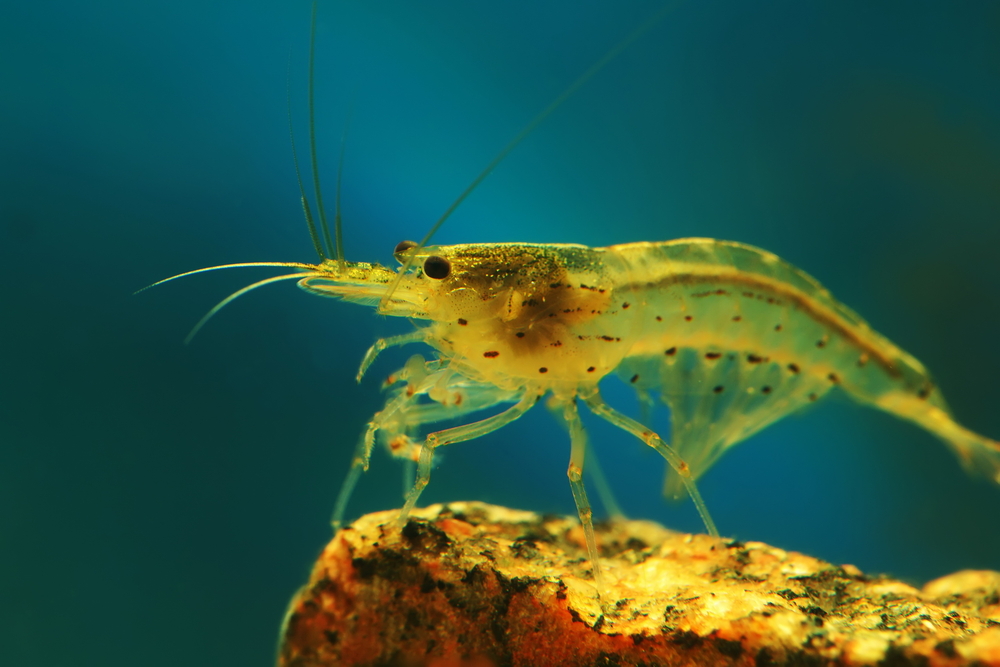
Amano shrimp, also known as Caridina multidentata, are freshwater shrimp that are native to Japan. They were first discovered in the 1980s by Takashi Amano, a Japanese aquarist and photographer.
Amano was known for his work in creating naturalistic aquariums and he introduced the Amano shrimp to the aquarium hobby in the 1990s.
Initially, Amano shrimp were only available as wild-caught specimens, but as their popularity grew, local breeders began to breed them in captivity. Today, Amano shrimp are widely available in the aquarium trade and are a popular choice for planted aquariums.
In the wild, Amano shrimp are found in fast-flowing streams and rivers in Japan. They are known for their ability to tolerate a wide range of water conditions, including low pH and high nitrate levels. They feed on algae, detritus, and small invertebrates.
Due to their popularity in the aquarium hobby, Amano shrimp have been extensively studied by researchers. They have been used as a model organism for studying the effects of environmental toxins on freshwater invertebrates.
Amano Shrimp in Captivity
Amano shrimp, also known as Caridina multidentata, are a popular choice for freshwater aquarium enthusiasts. These shrimp are native to Japan and are often used as a natural way to control algae growth in aquariums. In captivity, Amano shrimp can live for up to two years.
Acclimation is an essential step in introducing Amano shrimp to a new environment. It is recommended to acclimate the shrimp to the new water conditions by slowly introducing them to the new water over a period of time.
This process can take up to an hour and is crucial in preventing any shock to the shrimp.
Acclimatization is the process of allowing the shrimp to adapt to their new environment. Amano shrimp are hardy creatures and can adapt to a wide range of water conditions. However, it is important to maintain a stable water temperature and pH level for the shrimp to thrive.
Amano shrimp are social creatures and are often kept in colonies. It is recommended to provide the shrimp with hiding places such as shrimp tubes or plants to create a natural habitat for them. Amano shrimp are peaceful and can coexist with other freshwater shrimps and fish.
Calcium is an essential mineral for Amano shrimp. It is recommended to add calcium supplements to the water to ensure the shrimp have access to this vital nutrient. A lack of calcium can lead to molting issues and can shorten the lifespan of the shrimp.
Amano Shrimp and Dead Fish

Amano shrimp are known for their peaceful nature and ability to coexist with other aquatic creatures. However, there are times when they may be found in the company of dead fish.
This can be alarming for many aquarium owners, but it is important to understand the reasons behind it.
One possible reason for the presence of dead fish could be due to stress. When fish are stressed, they may become more susceptible to disease and infections, which can lead to death.
Amano shrimp are known to be sensitive to changes in water conditions, so it is possible that they may also be affected by stressful situations.
Another reason for the presence of dead fish could be due to natural causes. Fish, like any other living creature, have a finite lifespan.
When they reach the end of their life, they may die naturally. Amano shrimp are scavengers and will feed on dead fish, which is a natural part of their diet.
It is important to note that Amano shrimp themselves are not responsible for causing the death of fish. They are peaceful creatures and are not known to be aggressive towards other aquatic animals.
In fact, they can be beneficial to have in an aquarium as they help to keep the tank clean by eating algae and other debris.
Amano Shrimp in Saltwater
Amano shrimp are freshwater creatures, and they thrive in freshwater aquariums. However, they can also survive in brackish water and even saltwater, but only for a limited time.
When Amano shrimp are placed in saltwater, they can experience osmotic shock, which occurs when the concentration of salt in the water is higher than the concentration of salt in their bodies. This can cause the shrimp to become dehydrated, and they may die as a result.
If you want to keep Amano shrimp in saltwater, it is important to acclimate them slowly to the new environment.
Start by adding a small amount of salt to their freshwater tank and gradually increase the salt concentration over several weeks. This will give the shrimp time to adjust to the new salinity levels.
It is also important to note that Amano shrimp cannot reproduce in saltwater. They require freshwater to breed, so if you want to maintain a colony of Amano shrimp, you will need to keep them in a freshwater tank.
Amano Shrimp and Overfeeding

Amano shrimp are popular freshwater aquarium shrimp known for their ability to consume algae and other debris in the tank. However, overfeeding can be a major problem for these shrimp, as well as other aquarium inhabitants.
Overfeeding can lead to excess nutrients in the water, which can cause algae blooms and other water quality issues. This can be especially problematic for Amano shrimp, as they rely on a healthy and balanced ecosystem to thrive.
In addition to causing water quality issues, overfeeding can also lead to obesity and other health problems in Amano shrimp. This can make them more susceptible to disease and other issues, and can shorten their lifespan.
To avoid overfeeding, it is important to feed Amano shrimp a balanced diet and to avoid overfeeding them. This can be achieved by feeding them small amounts of food at regular intervals, rather than large meals all at once.
In addition to proper feeding practices, supplements can also be used to help support the health and well-being of Amano shrimp. These supplements can include vitamins, minerals, and other nutrients that may be lacking in their diet.
Amano Shrimp and Tank Cleaning
Amano shrimp are a popular choice for aquarium enthusiasts. These shrimp are known for their ability to help keep tanks clean by eating algae and other debris.
However, it is important to understand that they cannot do all the cleaning on their own. Regular tank cleaning is still necessary to maintain a healthy and thriving environment for your aquatic pets.
When it comes to tank cleaning, there are a few things to keep in mind. First, it is important to establish a proper nitrogen cycle in your tank. This involves establishing a balance between beneficial bacteria, fish waste, and other organic matter in the tank.
Amano shrimp can help with this process by consuming excess waste and debris, but they cannot do it all on their own. Regular water changes and filter maintenance are also necessary to maintain a healthy nitrogen cycle.
In addition to the nitrogen cycle, it is important to keep the tank clean and free of debris. This includes removing any uneaten food, dead plant matter, and other waste from the tank.
Amano shrimp can help with this process, but they cannot do it all on their own. Regular tank cleaning and maintenance are still necessary to keep the tank healthy and thriving.
Frequently Asked Questions
What is the average lifespan of Amano shrimp?
The average lifespan of Amano shrimp is around 2-3 years. However, with proper care and a healthy environment, they can live up to 5 years.
How many Amano shrimp can be kept together?
Amano shrimp are social creatures and can be kept in groups of 5-10 in a tank. It is important to provide enough space for each shrimp to move around and hide.
Can Amano shrimp live in a 5 gallon tank?
Yes, Amano shrimp can live in a 5 gallon tank, but it is important to ensure that the water parameters are stable and suitable for them. A larger tank is always better as it provides more space and a more stable environment.
What are the ideal water parameters for Amano shrimp?
The ideal water parameters for Amano shrimp are a pH range of 6.5-7.5, a temperature range of 72-78°F, and a water hardness of 2-15 dGH. It is important to maintain stable water parameters to keep the shrimp healthy.
What tank mates are compatible with Amano shrimp?
Amano shrimp are peaceful and can coexist with most other peaceful fish and invertebrates. However, it is important to avoid aggressive or predatory species that may harm or eat the shrimp.
Is it possible to breed Amano shrimp in captivity?
While it is possible to breed Amano shrimp in captivity, it is difficult and requires specific conditions. A separate breeding tank with suitable water parameters and a consistent food source is necessary for successful breeding.

Ian Sterling, founder of Fishlab.com, began his aquarium journey over 30 years ago, driven by a deep fascination for fish and their diverse personalities. His website, Fishlab.com, is dedicated to making fishkeeping accessible and enjoyable, offering beginner-friendly guidance, expert insights, and a community for aquarists to connect and share experiences.


